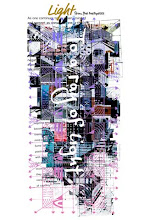Wakakusa-garan of Horyuji Temple has a golden ratio decoration on the eaves flat roof tile.

The width of the stairs in Kondo is the ratio created when two golden ratios are overlapped.

The pillars inside the Chumon are thicker at the bottom and thinner toward the top. This is called the pillar of entasis and can also be found in the Parthenon in Greece.
In the Kondo of Horyuji Temple, there are three groups of Shakasanzonzo, Yakushi Nyoraizo, and Amidasanzonzo. These also have common symbols that show the golden ratio, halo, and palm.



The dream hall of Toingaran is an octagonal hall. Octagram was also seen in Mesopotamia as a symbol.
In the five-storied pagoda of Horyu-ji Temple, there is a statue of a samurai, and there are three statues: a horse-headed statue, a bird-headed statue, and a sotogyo statue. .. The face resembles a Sumerian reptilian, but when compared in detail, the beak and clothing pattern are the same as the Karura statue at Kofukuji Temple in Nara Prefecture. Kofuku-ji Temple in Nara Prefecture was founded in 669, and Horyuji Temple was founded in 607. The age and location are almost the same.
















0 コメント